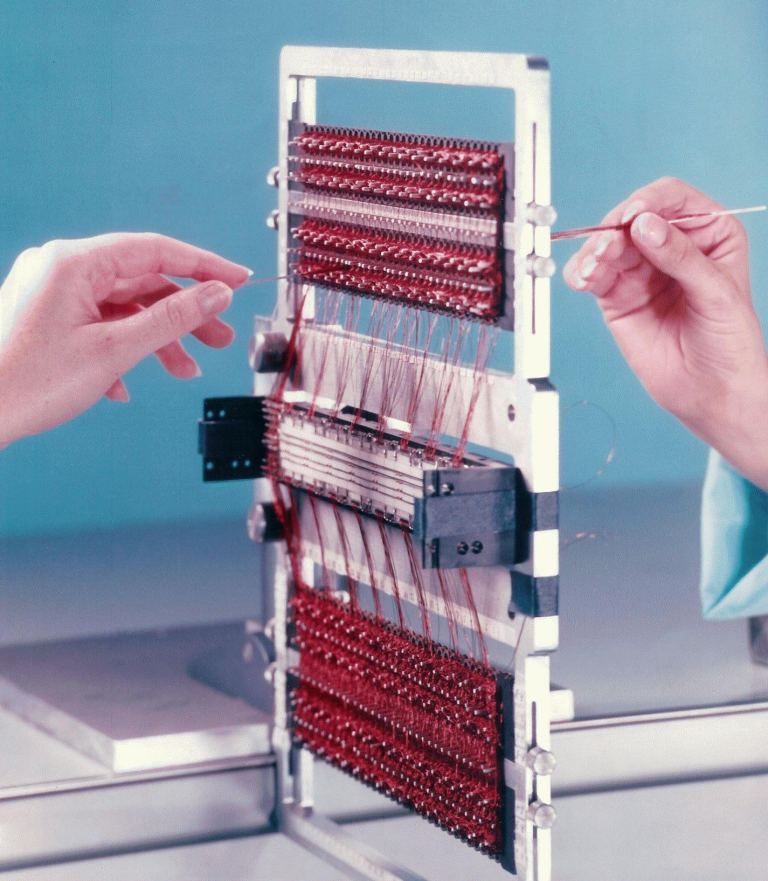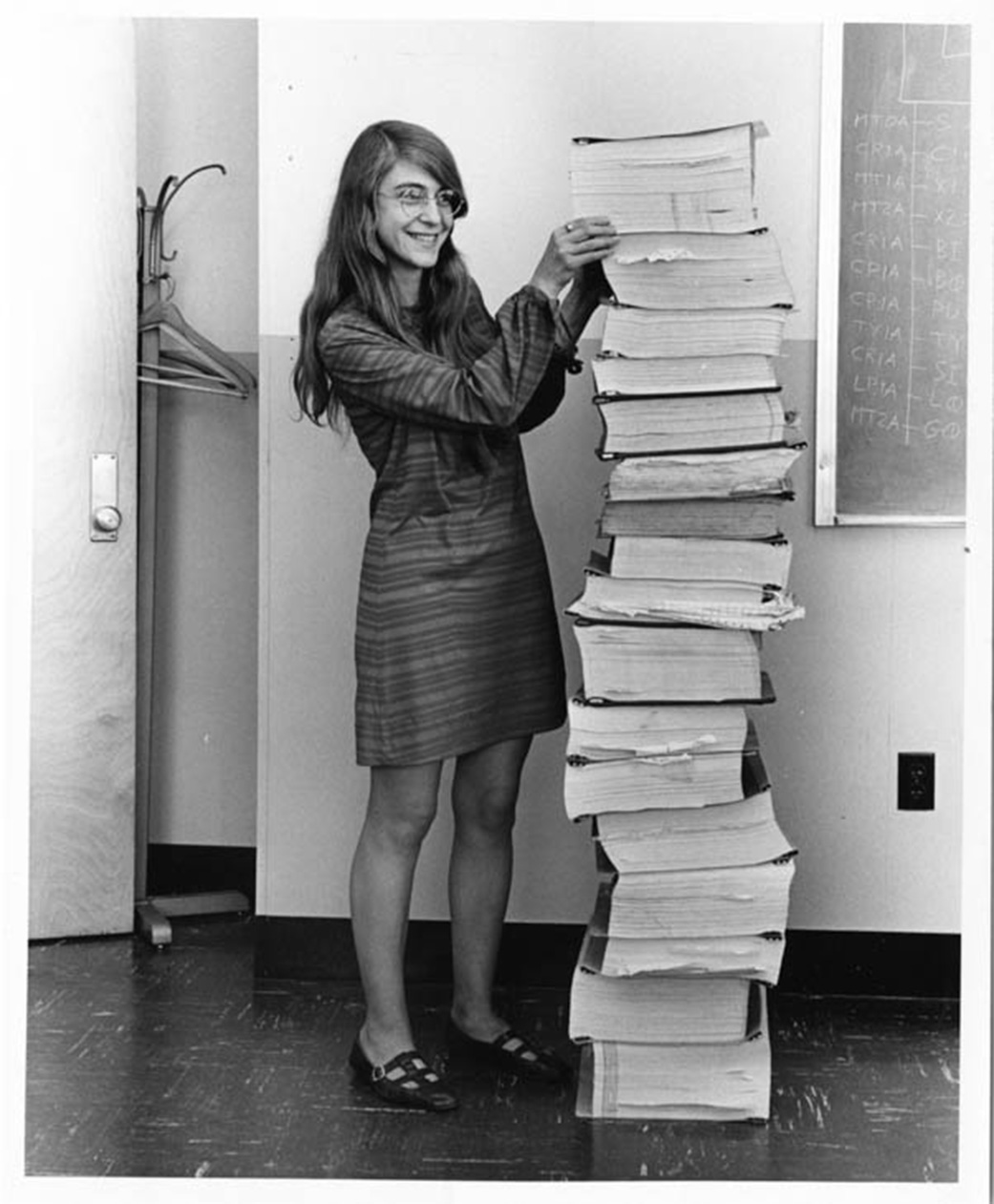Software Engineering
The Apollo missions were marked for their heavy use of computers. For example, this next picture is the memory core of an Apollo Guidance Computer, developed for the Apollo missions. The two hands you see in the picture belong to professional weavers who were hired to implement the program for the mission. The program was encoded using core rope memory, a kind of read-only memory that stored 0 and 1 values by the inclusion or omission of a wire through a series of tiny magnetic rings. Each computer program was truly hard-coded - any mistake would entail a costly rebuilding of the core. 1
Thus, there was significant pressure on NASA to make sure programs were correct. This next picture is Margaret Hamilton, one of the software developers who led the effort to create those guidance programs. She insisted a rigorous approach and comprehensive testing was crucial to the success of Apollo. And her approach paid off - No software bugs were ever found in the Apollo guidance software, and it was later adopted for use with the space station Skylab. The term “Software Engineering” was coined by her to describe her work. And just to emphasize the size of that task - that stack of documents next to her is the source code for the Apollo guidance software! 2.
Unfortunately, not all software was being built to NASA’s exacting standards. At the 1968 NATO Software Engineering Conference, the same year of the first manned Apollo mission, the term “Software Crisis” was coined to describe a growing problem in the software industry.
-
Universe Today, “The story of the Apollo Guidance Computer, Part 2” ↩︎
-
Andres Almeida, “Margaret Hamilton, Apollo Software Engineer, Awarded Presidential Medal of Freedom”, Nasa History, Nov. 22, 2016. ↩︎

